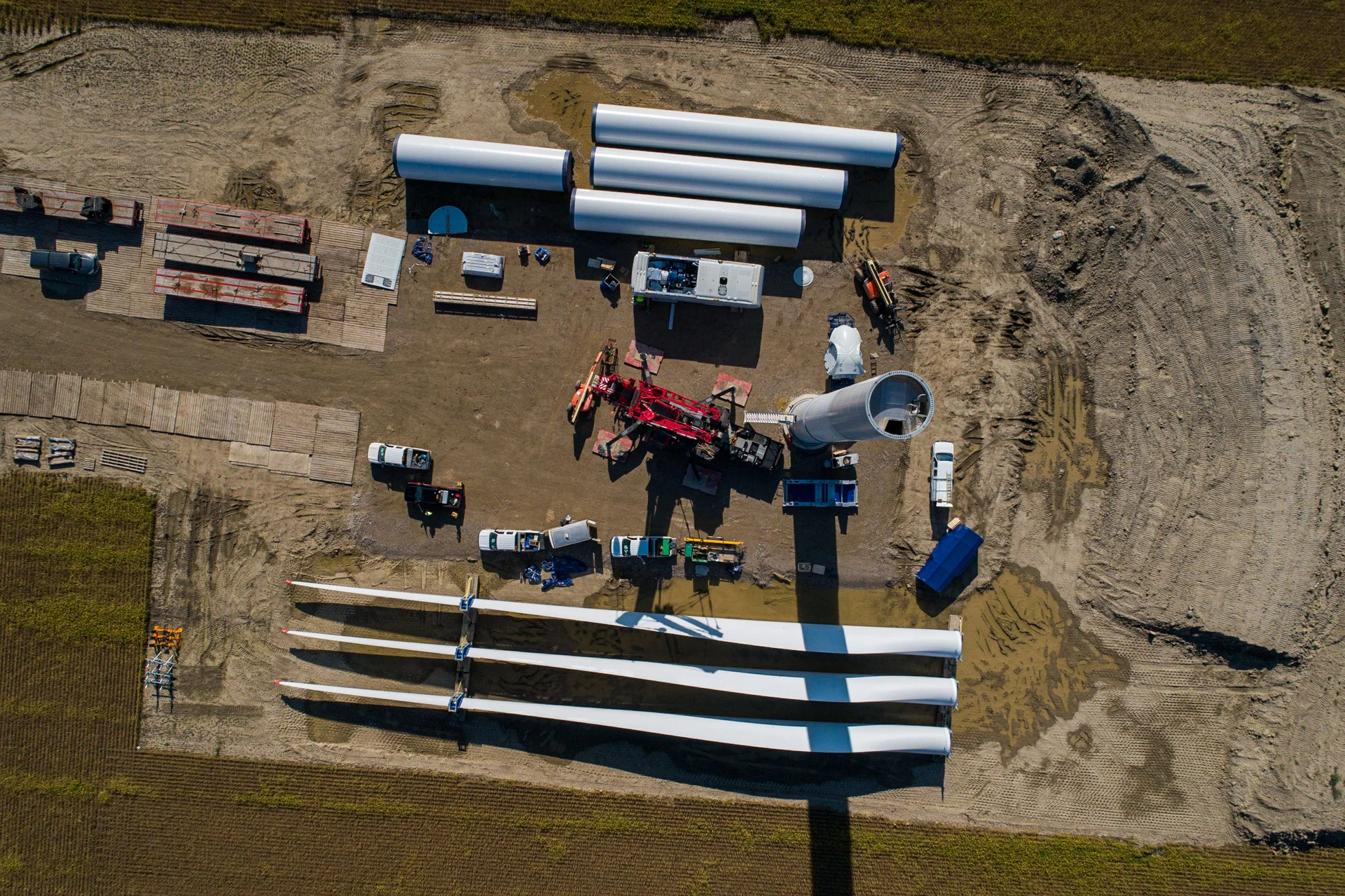
COVID opportunities: Countries investing in a post-pandemic green recovery
The pandemic has been a serious blow to the world economy, but as things get underway again, some countries are in the early stages of making the reset a green one.
The COVID-19 pandemic briefly paused the global economy. But, amid the crisis, there have been mounting calls to act in the face of the emergency. For many, this is an opportunity to reset the economy, introduce green infrastructure, and “launch sustainable stimulus packages focused on clean energy technologies,” as the International Energy Agency put it in March.
And in recent weeks, it seems the bold vision is migrating out of think tanks and NGOs and into the halls of power.
The largest effort to join a green renaissance with COVID-19 recovery came in late May, when the European Union (EU) announced that its proposed recovery package, weighing in at a colossal 750 billion euros ($1.1 trillion), would explicitly set aside money for green transitions.
The recovery plan turns the immense challenge we face into an opportunity, not only by supporting the recovery but also by investing in our future.
“The recovery plan turns the immense challenge we face into an opportunity, not only by supporting the recovery but also by investing in our future,” European Commission President Ursula von der Leyen said when the plan was announced on May 27th. “The European Green Deal and digitalization will boost jobs and growth, the resilience of our societies and the health of our environment.”

People cycling at Reforma street in Mexico city—on sundays they close the street so people can ride. Photo Credit: Getty Images
The package, which the EU will fund through borrowing, includes 150 billion euros for transitions to clean transport and clean industry, as well as home renovations for energy efficiency.
The extra aid will be on top of the EU’s so-called Green New Deal, a comprehensive package of reforms and transition measures put forward late in 2019 that aims to cut the organization's carbon emissions by up to 55 per cent by 2030, and achieve net-zero emissions by 2050. All at an estimated cost of $1 trillion euros ($1.5 trillion), even before the most recent COVID-19 aid package is taken into account.
The COVID-19 recovery passage isn’t guaranteed as of yet. Like most decisions the organization takes, it will require the approval of all 27 EU member states, making consensus hard enough to achieve before even taking into account the positions of member states who are reluctant to increase spending at the EU level.
"The positions are far apart and this is a unanimity file; so negotiations will take time,” a Dutch diplomat, speaking on condition of anonymity, told Reuters. “It's difficult to imagine this proposal will be the end-state of those negotiations."

Aerial of wind turbine installation in Ontario, Canada. Photo Credit: Neil Ever Osborne
Still, it’s the largest national or supranational recovery plan with at least some element of climate change action built into it so far, and other countries are showing signs of working in a green element to their own recovery plans -- or at least not allowing the pandemic to derail existing spending.
In South Korea, for example, the government was already aiming to ramp up renewables to account for 33 per cent of the country’s installed generation capacity by 2030 prior to the pandemic. Now, the government’s advisory group is urging a more ambitious plan of 40 per cent by 2034.
As for decarbonized transport, other countries are pressing ahead during the pandemic as well.
In the U.K., the government announced in May that it would be spending £250 million ($425 million) to upgrade or install cycle paths, bus-only lanes, and safer sidewalks for pedestrians, the first stage of an active travel investment fund that will eventually total £2 billion ($3.4 billion). In April, China announced it would be spending 2.7 billion yuan ($511 million) to install 53,000 EV charging stations, 18,000 of which would be for public use.
Still more nations plan on making urban cycling and walking more attractive than car travel by simply barring vehicles from existing roads in some cities, such as Paris and Milan. In the case of Milan, in the epicentre of Italy’s COVID-19 outbreak, it would be making pandemic road closures permanent.
There are certainly a few cases of one step forward, one step back. China, for example, is on track to improve generation capacity by ramping up construction of coal-fired plants, with more approved in March this year than in all of 2019.
WATCH BELOW: AIR POLLUTION MAY WORSEN EFFECTS OF COVID-19, RESEARCHERS SAY
IN CANADA, MORE CALLS FOR GREEN STIMULUS
In Canada, the government hasn’t formally announced anything like the E.U.’s green recovery plan, and though the Liberal Party promised to make Canada’s emissions net-zero by mid-century in the 2019 election, it’s not clear how that goal has been affected by the pandemic.
Ottawa has announced some piecemeal measures during the pandemic, such as $750 million to help companies reduce emissions from methane, a greenhouse gas even more potent than CO2. However, a spate of climate change-minded groups have been urging the federal government to be bolder in linking the COVID-19 recovery to a green transition.
In May, a newly formed independent advisory group made up of leading figures in banking, insurance, pensions, university, finance and other sectors -- and including Gerald Butts, a former principal secretary to Prime Minister Justin Trudeau -- announced it would be developing concrete proposals to present to the government in the coming months.
The David Suzuki Foundation, for its part, has urged Ottawa to adopt a full-court press of targeted measures, including retrofits and energy efficiency, community renewable energy production, expanding EV networks and public transit infrastructure, and retraining energy sector workers.
“Collectively, we must realize that once we get through this pandemic – and we will get through it – we will face a dual challenge: a shattered economy and an environmental crisis. We will have no choice but to confront both simultaneously,” the foundation’s CEO Stephen Cornish and director-general for Quebec and Atlantic Canada Karel Mayrand wrote in Policy Options last month.
WATCH BELOW: ELECTRIC VEHICLE EMISSIONS DEFINITELY LOWER THAN FOSSIL FUEL COUNTERPARTS, STUDY CONFIRMS
STUDY: GREEN RECOVERY A BIGGER ECONOMIC BOON
Should more countries follow the EU’s lead, the rewards would be substantial, according to some experts.
In May, a study published by a group of U.S. and British economists suggested that working a green transition into a COVID-19 recovery would get a larger bang for nations’ buck than leaving it out.
The authors looked to the 2008 financial crisis for cues, examining 700 stimulus policies arising from then, as well as interviews with 231 experts with experience from that time in finance ministries and central banks, who would have been responsible for carrying out those plans.
They concluded that green policies like building clean physical infrastructure -- such as solar or wind installations and upgraded electrical grids -- along with energy efficiency programs and boosts to clean research and development, had outsized economic impacts.
The researchers also make a distinction between industrialized and upper-income countries, and middle- and lower-income nations: more clean energy infrastructure in the former, support for more climate-friendly agriculture in the latter.
“Green fiscal recovery packages can act to decouple economic growth from GHG emissions and reduce existing welfare inequalities that will be exacerbated by the pandemic in the short-term and climate change in the long-term,” the authors wrote.
These authors also suggested that such green recovery plans feature education and retraining programs that would help workers adjust to a decarbonized economy.
Carbon emissions have plunged in recent months due to the pandemic, but the authors stress this will likely be short-lived unless deliberate measures are taken in the months ahead.
Top Photo Credit: Getty Images











